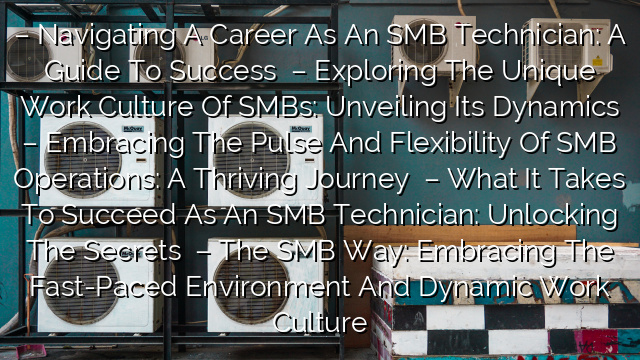Introduction
In an era where technology rapidly evolves and reshapes the landscape of work, small businesses must not only adapt to new tools but also understand how technology affects work culture and dynamics. As a small business owner or team member, mastering this aspect of tech is as crucial as the software itself. In this post, we’ll explore how small business tech intersects with work culture and the dynamics within, offering practical advice on navigation and integration for a seamless, productive work environment.
The Impact of Tech on Work Culture
Technology has an incredible influence on work culture. It can transform communication patterns, redefine employee roles, and alter the pace and space of work. Understanding these changes is key to managing your team effectively.
Communication Tools
- Email and Instant Messaging: The way your team communicates can foster a culture of immediacy or deep work, depending on how these tools are used.
- Collaboration Platforms: Tools like Slack or Microsoft Teams create new opportunities for teamwork but can also reshape social dynamics within the office.
- Video Conferencing: Remote work is facilitated by platforms like Zoom, challenging traditional face-to-face work cultures.
Project Management Software
Project management systems like Trello or Asana can streamline work and promote a culture focused on productivity and accountability. However, the shift to such systems requires team buy-in and adaptability.
Automation and AI
As more tasks become automated, the role of the employee shifts towards creative and analytical work, affecting job satisfaction and engagement. It’s critical to ensure that the human element of work isn’t lost in this tech-driven change.
Integrating Tech While Preserving Culture
To successfully integrate technology in your small business, balance embracing efficiency with maintaining the essence of your work culture.
Involve Your Team in Decisions
- When adopting new tech, consider the input and perspectives of your team to facilitate a smoother transition and to keep the team spirit intact.
Tech Training and Adaptation Periods
- Offer comprehensive training and a grace period for adaptation. This ensures everyone is comfortable with the new systems, preserving confidence and morale.
Set Clear Guidelines
- Establish rules for communication and usage of tech tools. This helps prevent misunderstandings and misuse, maintaining a positive work atmosphere.
Highlight Human Interactions
- Even with advanced tech, prioritize face-to-face meetings and casual conversations. These build relationships and a sense of belonging among team members.
Understanding Team Dynamics with Technology
Team dynamics are subtly but significantly influenced by the technology adopted in the workplace. Awareness and management of these changes can have a profound impact on team performance.
Remote Work and Team Cohesion
- Remote work can give rise to feelings of isolation. Counter this by using technology to maintain regular check-ins and team-building activities.
Technology and Workplace Hierarchies
- Technology can flatten organizational structures by providing every team member with a platform to speak up. This democratization can be empowering but requires leadership to manage effectively.
Managing Reliance on Tech
- Avoid over-reliance on tech. Ensure that technology serves as a tool for enhancing productivity, not as a crutch that stifles creativity or creates dependency.
Conflict Resolution in a Tech Environment
- While technology can facilitate communication, it can also lead to misunderstandings. Develop clear protocols for handling conflicts that arise from digital communication.
Case Studies of Successful Tech Integration
Learning from the successes of other small businesses can offer insights into effective strategies for integrating technology while maintaining a positive work culture and dynamic teamwork.
Case Study #1: Implementing a New CRM System
Company X successfully introduced a new CRM system by involving employees in the selection process and providing ample training. The outcome was increased sales and a reinforced team spirit.
Case Study #2: Transitioning to Remote Work
Business Y’s transition to remote work was made smoother by setting up regular virtual team-building exercises, resulting in sustained productivity and high morale.
Case Study #3: Integrating Automation
Startup Z automated several routine tasks, freeing up employee time for creative endeavors. They ensured that the human touch remained by redeploying staff to roles that required interpersonal skills.
FAQ Section
How can I ensure my team doesn’t resist new technology?
Involve your team in the selection process, provide thorough training, and be receptive to feedback. This inclusive approach helps in easing resistance and fostering a cooperative environment.
What can I do to maintain team dynamics with remote workers?
Utilize technology for regular virtual meetups, include remote workers in decision-making, and ensure they have equal access to communication channels to keep them engaged.
How do I prevent tech from disrupting existing work culture?
Introduce technology as an aid to enhance, not replace, the culture. Emphasize the importance of personal interactions and maintain traditions that define your workplace.
Can technology improve employee morale?
Yes, technology can streamline tasks, increase efficiency, and provide new opportunities for collaboration and growth, all of which can boost employee morale when implemented thoughtfully.
What steps should be taken when technology affects workplace hierarchies?
Be open to the democratising effect of technology. Provide leadership training to manage flat structures and encourage a culture where every voice is valued.
Conclusion
Mastering small business tech is a journey that intersects significantly with workplace culture and dynamics. By pursuing a thoughtful, inclusive approach to tech integration, you ensure your business’s culture thrives alongside technological advancements. Navigating this intersection successfully paves the way for a more productive, cohesive, and dynamic workplace ready to embrace the future of work.








